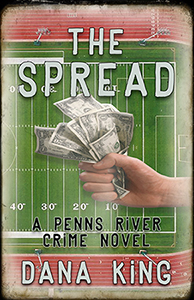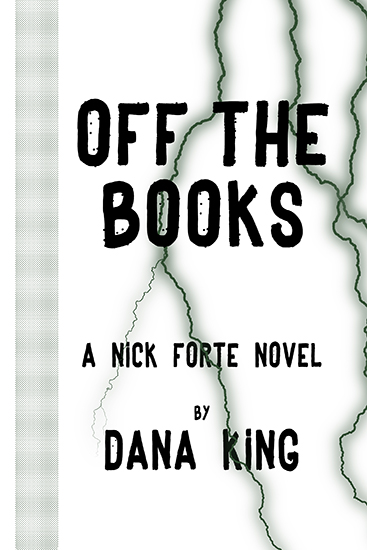Turner Classic
Movies and Fathom Events celebrated the 75th anniversary of the
release of The Maltese Falcon by
presenting it on large screens in select finer theaters across the country a
couple of weeks ago. (Peter Rozovsky and Philadelphia got hosed at the last
minute and Peter made us all pay for it.) TCM and Fathom did a nice job. Some
onscreen trivia in lieu of pre-movie ads, and Ben Mankiewicz gave brief intro
and exit comments. (Mankiewicz was good and he’s TCM’s man, but I would love to
have seen Eddie Muller in that gig.) The movie shown in its original display
ratio. It didn’t appear to have had the sound remastered. Everything just as it
would have been in 1941. It was bliss.
Watching it on a
big screen as a special event also brought a level of attention that’s hard to
duplicate at home. (It might also be that I’ve seen the movie and read the book
so many times I was able to look for subtlety and subtext because I knew
everything else so well.) Bogart plays Spade as a borderline anti-hero, looking
out for himself first, and the undertone of disreputability and potential
betrayal Hammett created in the book is well done. There is none of the classic
good guy who’d wear a white hat in a Western to Sam Spade; uncertainty about
his motives and goals lends depth to everything around it.
Gary Bird, my Music
Literature professor junior year of college, taught us that many musicologists consider
Beethoven’s Fifth Symphony the most perfect piece of music ever written. To
change anything—add a note, remove a note, move a note—would diminish it. The
Ninth Symphony may be a greater work of art, but there are spots where the
orchestration is a little muddy and the fourth movement fugue has a few quirks;
the Fifth is perfect as it is. Hammett’s novel is, to me, the Beethoven’s Fifth
of crime fiction. (What is my idea of crime fiction’s version of Beethoven’s
Ninth? Probably Ellroy’s American Tabloid.)
The movie version
of Falcon is just as good. John
Huston was smarter than his two predecessors who’d tried to make Hammett’s
novel into a movie. He appreciated the genius of the work and left it alone as
much as the Hayes Office would allow, transparently passing over two omissions
without leaving anything out of the story. We see Wilmer Cook waiting outside
Spade’s window when the detective is talking Brigid into spending the night; in
the book no one is there. Later, when Gutman palms the thousand-dollar bill, Spade
confronts Brigid about it. In the book they go into the bathroom and he makes
her strip down, showing his trust in her is not as great as he presented
earlier. The Flitcraft Parable also missed the cut. Still, it’s as faithful a
successful film adaptation as anyone has attempted. The script, direction,
cinematography, acting, and the casting are spot on.
Bloggers are
opinionated buggers. Four paragraphs of lavish praise does not a blog post
make. I have one minute objection, one I’ve had since I first saw the film
probably forty years ago*: Mary Astor just wasn’t beautiful enough to make me believe
she’s Brigid O’Shaughnessy. Floyd Thursby threw in with Brigid when he had a
sure thing with Gutman. Miles Archer followed her up that alley, gun on his hip
and coat buttoned. Sam Spade is as hard-nosed a PI as walked the earth until
Mike Hammer and he fell for her, though he still sent her over.
While Astor was not
an unattractive woman, Brigid O’Shaughnessy made hard men do foolish things on
short acquaintance. Whatever her considerable talents, it’s a stretch to
imagine such a man looking at Mary Astor and taking great risks merely on
sexual attraction.
Who would have been
better, looking back 75 years? It’s a reasonable question, and it’s only fair
for a person who raises an issue to have a proposed solution. Rita Hayworth and
Ingrid Bergman both allegedly received consideration, and even I could see men
throwing their lives away for either of them. Who else, if we don’t limit
ourselves to actresses contemporary with the film?
Kim Basinger pops
immediately to mind. If making the film today, Scarlett Johansen would be an
obvious choice. The best ever might be Susan Sarandon. She has the looks and
the sex appeal and the wide eyes to pull off the original story that neither
Archer nor Spade believed as much as they believed her $200. (Suggestions
welcome below.)
My “research”
(reading IMDB) shows Mary Astor had a quite unsavory reputation at the time for
infidelity, drinking, and generally unacceptable (for the day) female
rowdiness. She also had an affair with John Huston during filming. So she had
that going for her, and, assuming moviegoers knew this, it might have been
enough to make her more believable in the part for them than she was for me.
Everyone involved is dead now—Elisha Cook Jr. the last to go, in 1995—so I need
not ask forgiveness from Ms. Astor, whose performance was wonderful.
I digress. (At
length, no less.) Repertory theaters are pretty much a thing of the past,
pushed to extinction by NetFlix and YouTube and home DVD purchases. Many of
those who read this may have copies of The
Maltese Falcon at home. Doesn’t matter. Do not pass up a chance to see it in a dark theater on a big screen.
If you have such an opportunity, find out where and do not ask when. I distrust
a man who says "when."
* --
It’s now been longer since I first saw The Maltese Falcon that it had been since the film’s release to my
first viewing. I’m that old.





1 comment:
Would have loved to see this on a big screen. I wish they would advertise this more because it was nearby.
Post a Comment